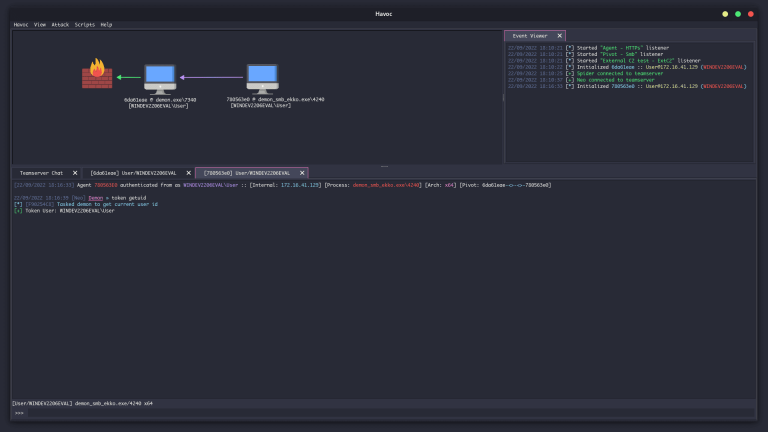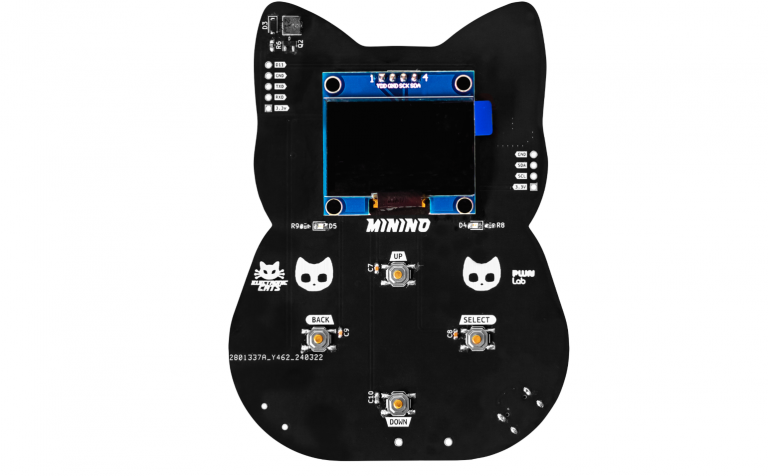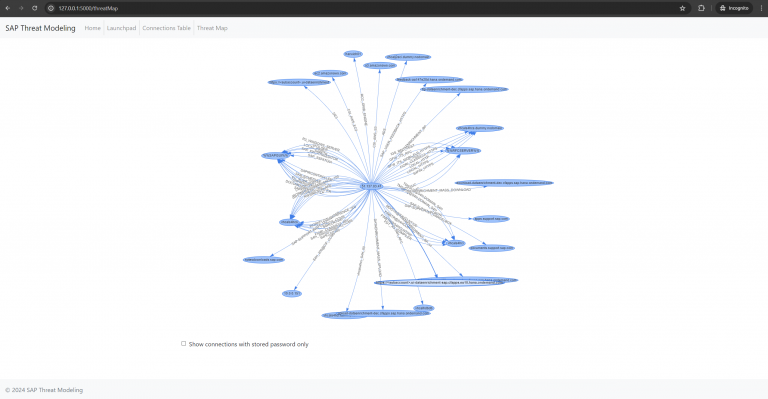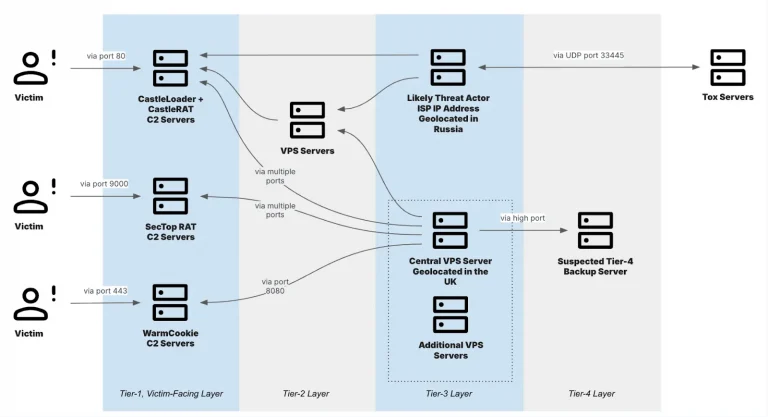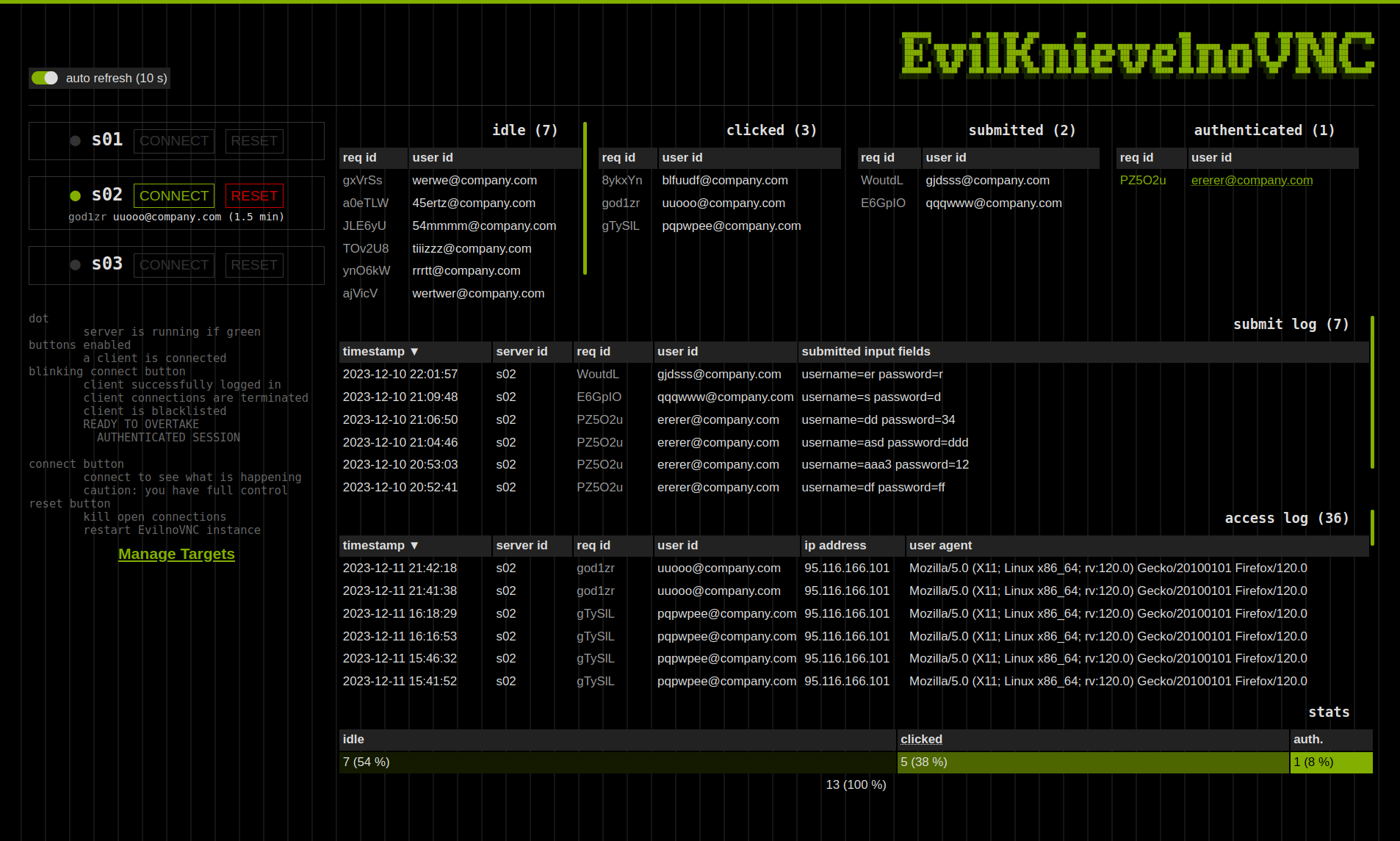
Weaponized EvilnoVNC: scalable and semi-automated MFA-Phishing via “browser-in-the-middle”
Features
- concurrent EvilnoVNC instances, as many as your server can handle
- access to EvilnoVNC sessions is limited to generated URLs with random victim-specific identifier in parameter
- auto block users after successful authentication, presenting a custom message/page
- manipulate target site via Chromium extension, e.g. hide alternative login methods such as hardware token, or perform any action in the name of the victim
- admin dashboard
- monitor active victims in real-time
- react on victim’s actions: view session, overtake (authenticated) session or reset session
- overview of phishing campaign progress
- collected credentials
- dynamic resolution mode with preloading page is currently the default
- victims can paste text to noVNC via dirty trick
- a victim’s user agent is replicated
Technical Overview
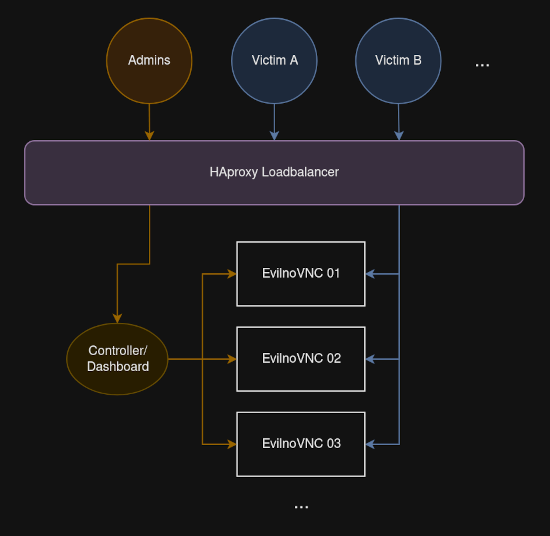
- Running on multiple Docker containers with internal networking
- HAproxy used as loadbalancer and gatekeeper
- nginx for simple dashboard
- victim data and statistics is stored in a central targets.json
- Chromium extension inside noVNC that monitors the victim’s activity
Use
- when running EvilKnievelnoVNC the admin dashboard is reachable via the defined URL and basic auth credentials (/phishboard)
- by default a self-signed TLS certificate will be presented (CN: testing-server) with the following fingerprints
- sha1
AE:28:1B:05:5B:C0:55:41:22:DA:7C:6F:D2:51:8D:D1:11:B2:7C:21 - sha256
D0:B6:9D:86:6D:AE:B4:E1:CA:F0:C1:F5:4D:82:45:7E:13:06:CD:1A:DE:49:A3:80:DC:21:6A:5C:A8:F4:84:1B - place your own TLS certificate, define location in setup.sh
- sha1
- configure victims in the dashboard via “Manage Targets”
- add an email address per victim
- send the generated URLs to the victims and monitor the activity in the dashboard
- caution
- use responsibly and only in legal manners
- there is no guarantee for anything, check the code and test it before usage

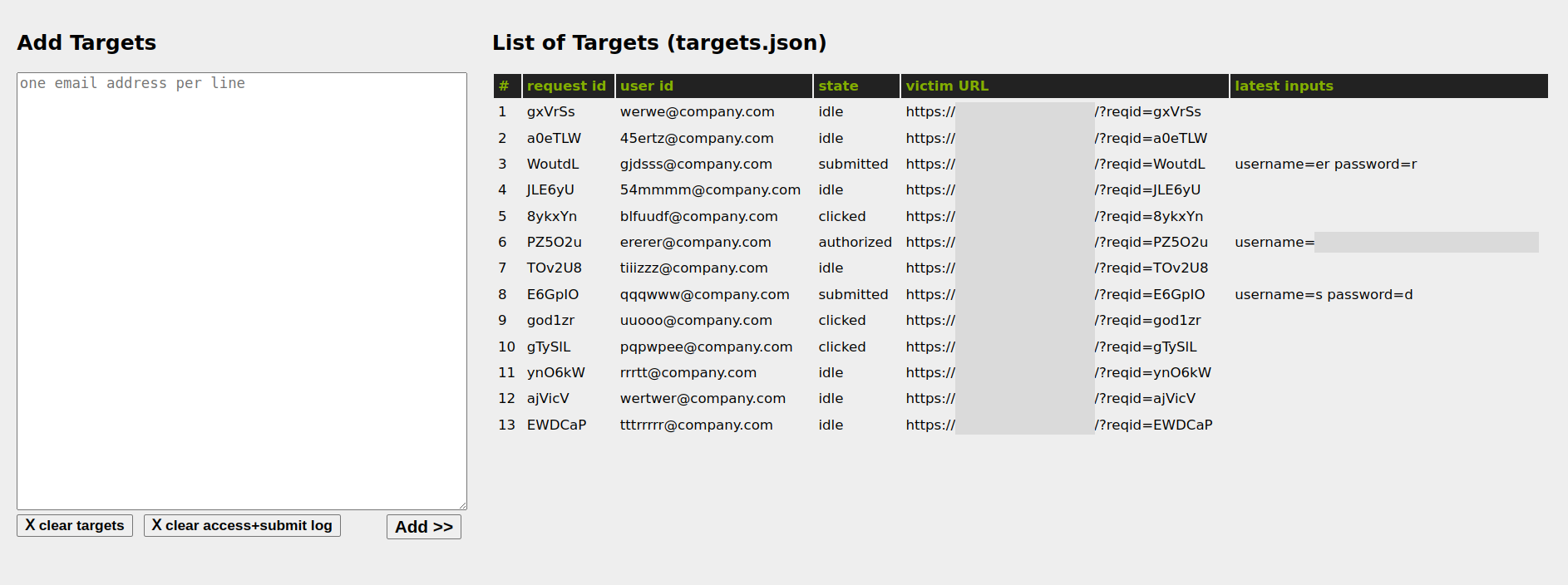
Advanced Usage
- victim actions are logged to accesslog.txt and submitlog.txt
- keylog, decrypted cookies, Chromium profile and downloads are put in the central Loot directory (docker volume)
- consider running controller and haproxy manually with their respective run.sh for debugging and insights
- there needs to be at least another container running before haproxy is started! (haproxy limitation)
- consider customizing the name of the identifier URL parameter (haproxy/haproxy.cfg and controller/src//.php)
- with some adjustments, it can be placed in the path of the URL as well
